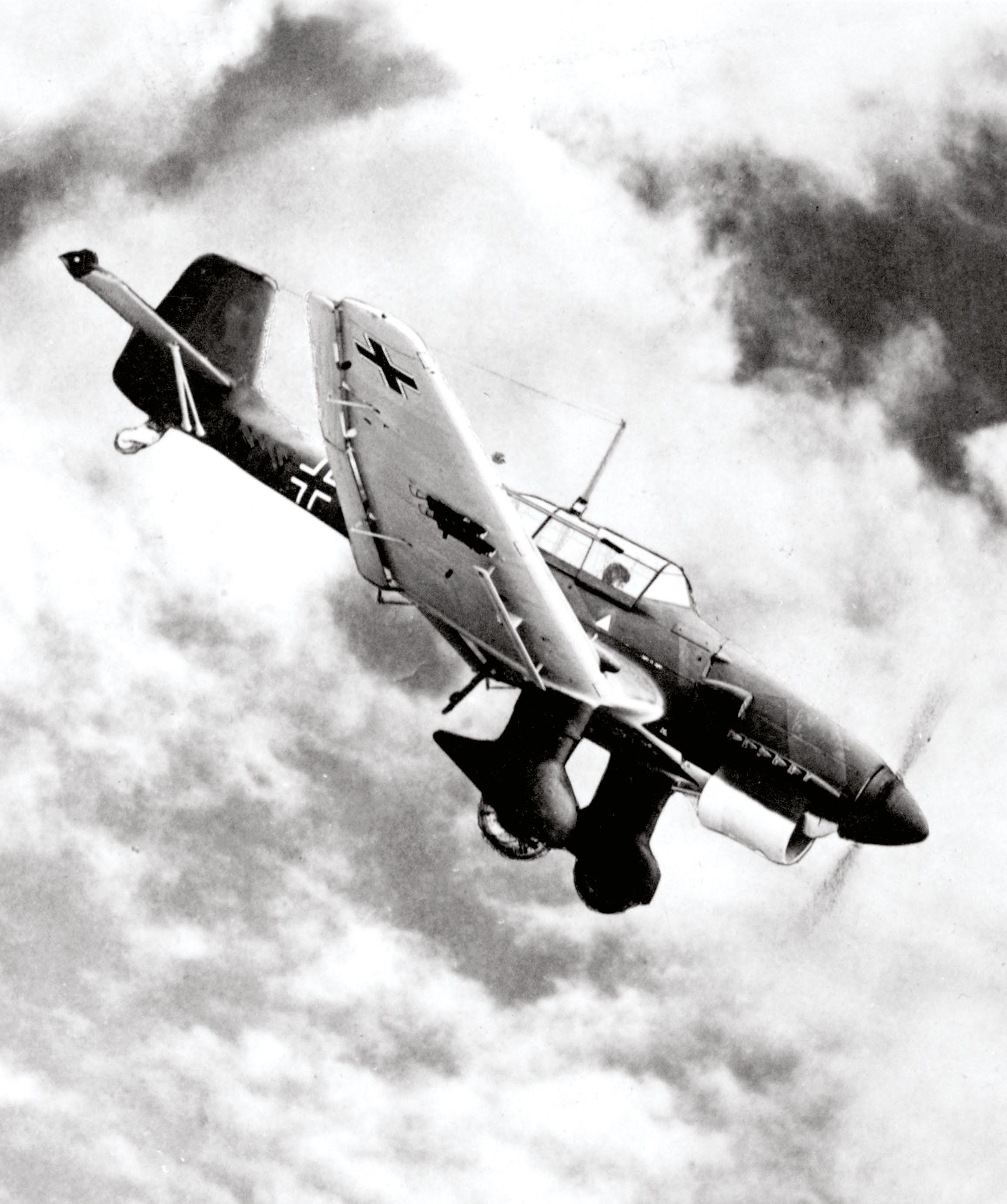Prøve GULL - Gratis
HITLER'S BOMBERS
History of War
|Issue 141
Today, countless European cities still bear scars from the Luftwaffe's bomber crews. But with bombers constituting one-third of all German aircraft lost in WWII, such devastation didn't come cheap for the Kampfflieger

The fighter pilots were lively, thirsty for action and quickly landed again after a successful fight - they are people of a very special kind," recalled German airman Klaus Deumling. "Since I did not fit such a character, I signed up for the calmer, more relaxed but no less endangered bomber pilots. I didn't just want to take off and land straight away: I wanted to fly long distances with navigation.
My subsequent flying career was not suitable for quickly achieving major awards but it became so interesting for me - both in terms of flying and especially technically in a way that I would never have dreamed of at the end of military school."
Deumling, who later flew in the Luftwaffe's reformed Kampfgeschwader 100 Wiking, demonstrated how being a Kampfflieger ('bomber airman') was not seen as a consolation prize for those who yearned to be a fighter pilot; rather, it was a treasured sanctuary for prospective airmen of a cool, curious and calculated nature. Such a dutiful and unwavering temperament, however, lent uncomfortably well to carrying out the demolition work that would help to realise the Nazi regime's most rapacious geopolitical ambitions.
Averaging between 18 and 21 years old, the Kampfflieger were rigorously selected, trained and primed for the bomber war - whether they were a pilot, Beobachter ('observer'), Bordfunker ('radio operator'), Bordmechanik ('flight mechanic') or Bordschütze ('air gunner'). By 1939, German bomber crews tended to be posted to operational units after receiving an average of 250 flying hours over 18 to 24 months; it took around twice as long to train a Kampfflieger pilot than it did a fighter pilot.
Denne historien er fra Issue 141-utgaven av History of War.
Abonner på Magzter GOLD for å få tilgang til tusenvis av kuraterte premiumhistorier og over 9000 magasiner og aviser.
Allerede abonnent? Logg på
FLERE HISTORIER FRA History of War

History of War
FLYING INTO HISTORY ENOLA GAY
The first atomic bomb was dropped on Japan by an American B-29 bomber, preceding the country's capitulation in WWII. Here navigator Theodore Van Kirk recalls his experience of the day that changed history
7 mins
Issue 149

History of War
PUTIN'S SUBMARINE FLEET
From the Cold War to modern operations, the threat beneath the waves has been steadily building, and could be about to escalate
4 mins
Issue 149

History of War
ON SILVER WINGS
THIS MOVING BIOGRAPHY OF AN 'UNKNOWN' WWII RAF FIGHTER ACE CHARTS DESMOND IBBOTSON'S CAREER, THE STORY ENDING WITH A TWIST WHEN HIS REMAINS ARE DISCOVERED IN ITALY IN 2005
2 mins
Issue 149

History of War
CAMBODIA vs THAILAND ROOTS OF THE BORDER WAR
July 2025's clashes are the latest in a long frontier conflict that has gone unresolved, from the era of warrior kings to smart bombs
4 mins
Issue 149

History of War
TASK FORCE GREMLIN
At the end of WWII the Japanese Imperial Army Air Force was conscripted into the Royal Air Force in Southeast Asia
7 mins
Issue 149

History of War
RAF RETURNS TO NUCLEAR
Nearly 30 years after giving them up, the RAF is poised to reacquire air-dropped nuclear weapons
3 mins
Issue 149

History of War
NO MORE NAPOLEONS
A MAGISTERIAL SURVEY OF NAVAL POWER AND POLICY
2 mins
Issue 149

History of War
STALIN'S BLITZKRIEG
In the final month of WWII, the Red Army launched a devastating strike into Manchuria, opening a new front with Japan and threatening invasion of the Home Islands
10 mins
Issue 149

History of War
BALACLAVA POCKET WATCH
This William IV silver timepiece and its owner survived the Charge of the Light Brigade at the Battle of Balaclava
1 mins
Issue 149

History of War
THE END OF THE SPY?
Human intelligence is a dying art, but it is still crucial for security agencies worldwide
3 mins
Issue 149
Listen
Translate
Change font size
